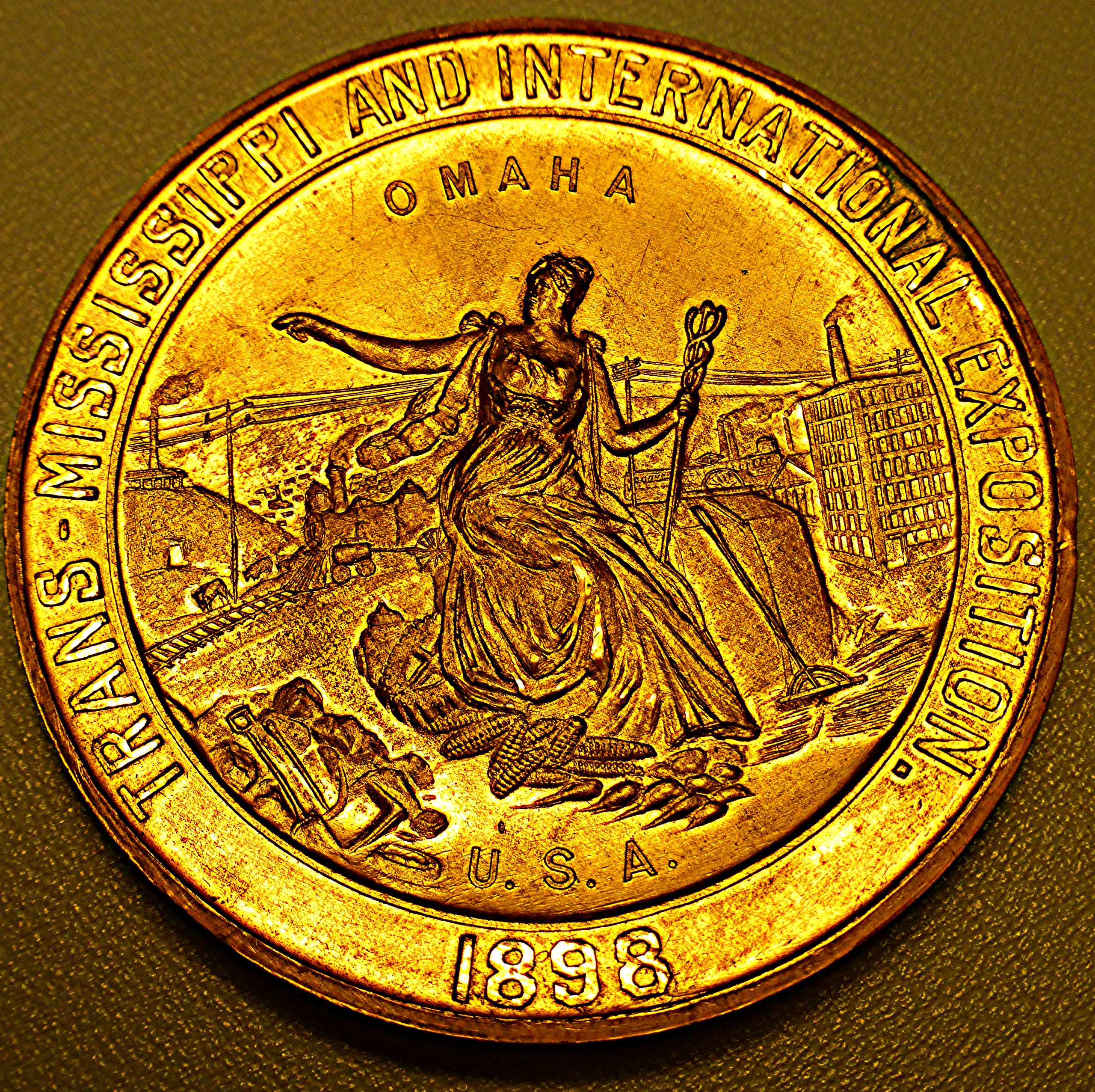The award medals at the 1898 Trans-Mississippi & International Exposition in Omaha, Nebraska were produced in several medal variants: bronze, silver, and gold being the main ones. Also there were medals for Highest Award and Honorable Mention.
Below is a copy of Bureau of Awards Report of the General Secretary of the Trans-Mississippi and International Exposition in 1899 summary the count of the medals issued during the Omaha exposition.
BUREAU OF AWARDS REPORT ON MEDALS ISSUED -1898 Trans-Mississippi Exposition
Hon. James M. Woolworth, Omaha, Chairman.
John E. Utt, Commissioner Commercial Club, Omaha, Asst. Chairman.
This bureau was ably conducted and the awards made upon reports of jurors were eminently satisfactory to the army of exhibitors. A jury of 3 persons examined, tested, and formulated a report, giving points of merit of each exhibit entered for competitive award. This report was examined and approved by the Bureau of Awards, assisted by the man- ager of the department. About 100 persons served the Exposition as members of the many juries, and the list comprised names of men, experts in their lines, from all parts of the United States and Canada. Medals and Diplomas were awarded as follows:
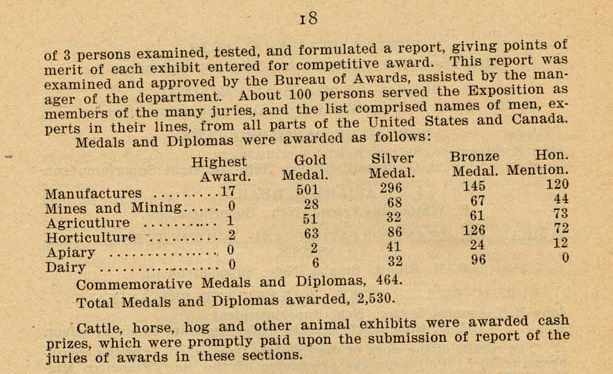
Despite the differences in the numbers produced, all medal variants are highly sought after by collectors due to their historical significance and artistic merit.
Below we have examples of the gold, silver and bronze award medals
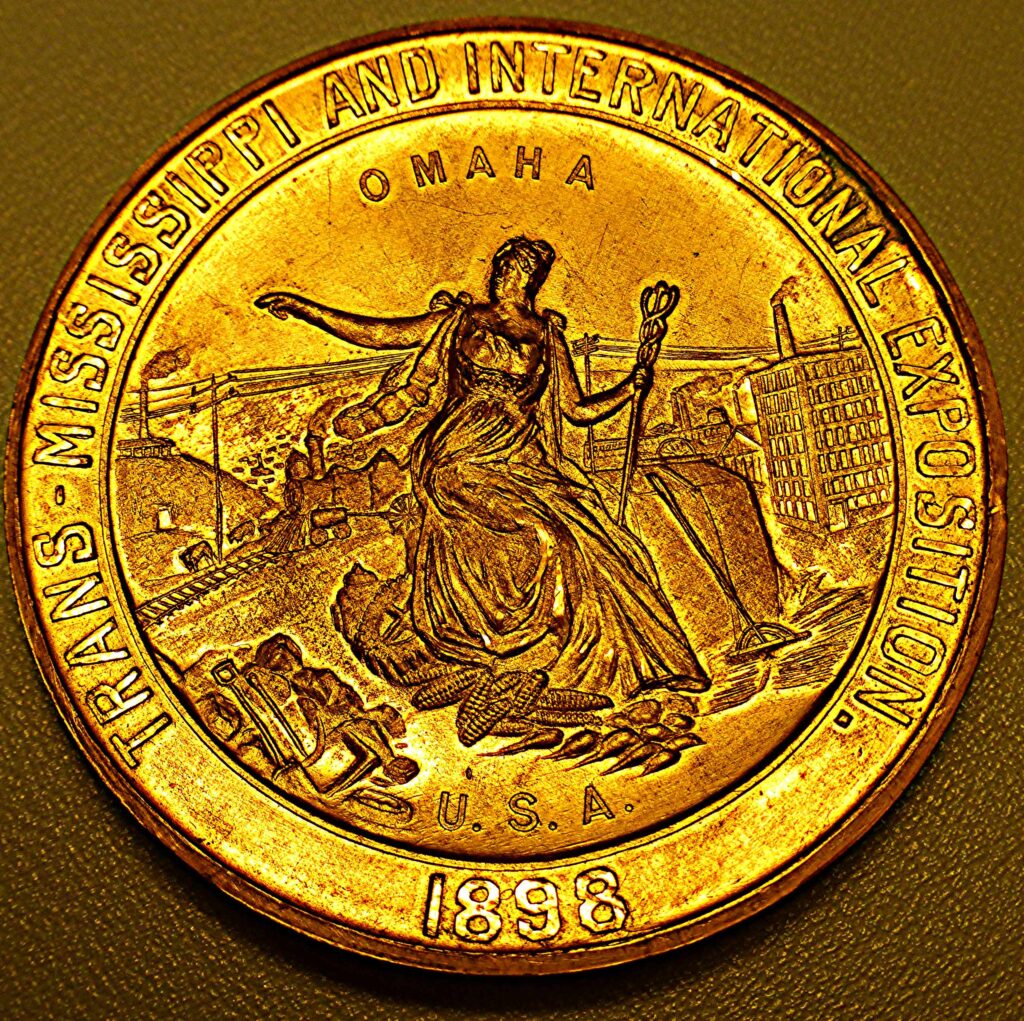
Gold Award Medal 1898 Omaha – 582 Issued
Nice gold plated award medal with the same design as bronze. Reads TRANS – MISSISSIPPI AND INTERNATIONAL EXPOSITION with 1898 at center bottom. U.S.A. just above the date.
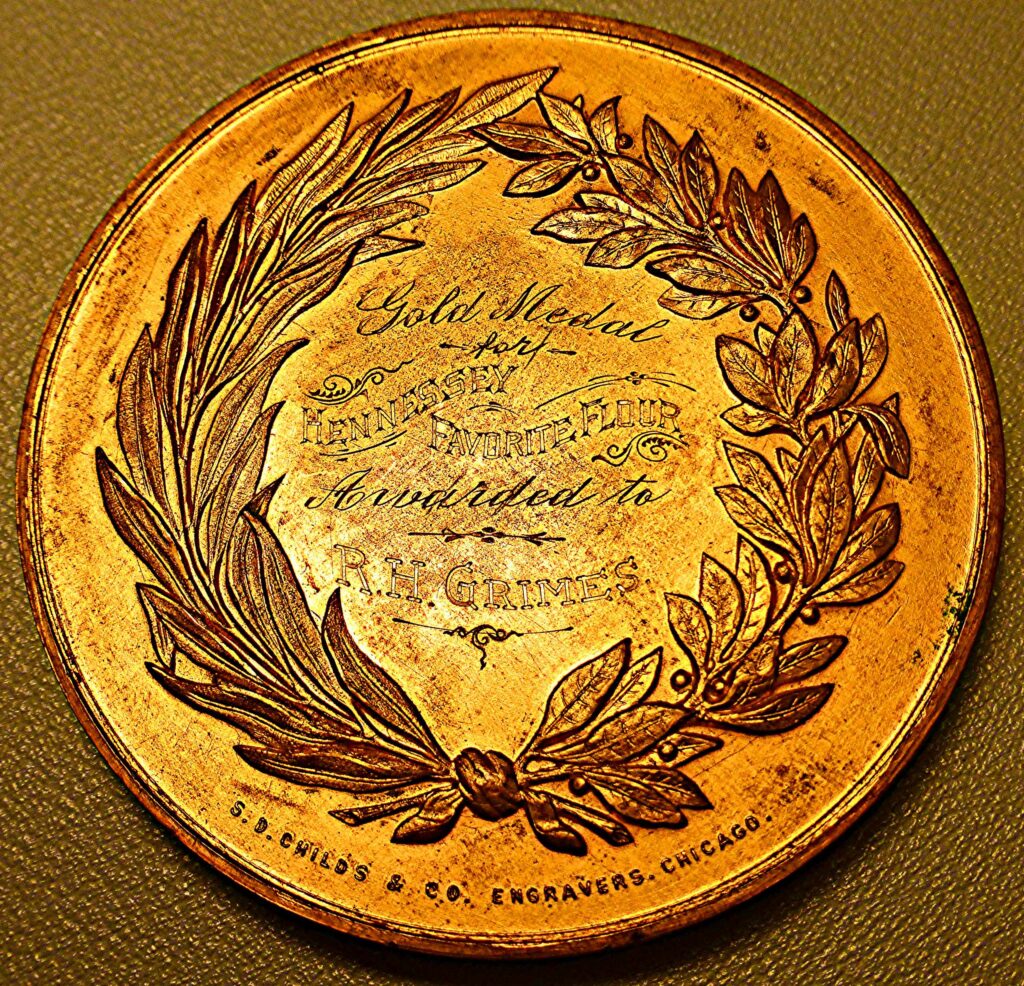
Gold Award Medal 1898
Nicely engraved with Gold Medal….. Awarded To…….
Reverse: honor wreath with S.D. CHILDS & CO. ENGRAVERS, CHICAGO below, engraved within “Gold Medal / FOR , Awarded to
At the very bottom: S.D. CHILDS & CO. ENGRAVERS CHICAGO
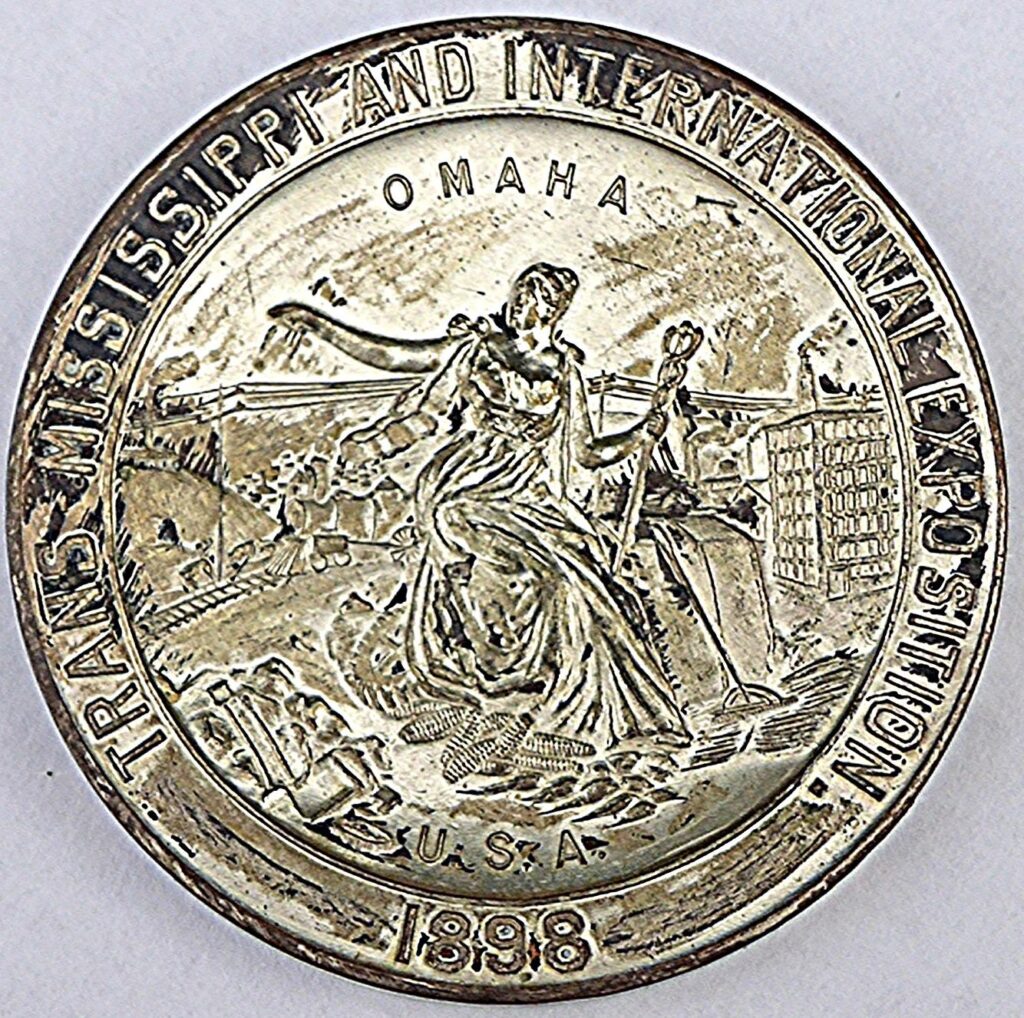
Silver Award Medal 1898
This silver award medal from the 1898 Trans-Mississippi & International Exposition of Omaha features a classical allegorical representation, common in the iconography of late 19th-century medals. The obverse side displays a female figure, likely symbolizing the personification of the United States or perhaps an embodiment of the spirit of the exposition itself. She is posed with an arm extended, holding a staff, suggesting guidance and leadership.
The background includes a detailed scene that could represent the American West, aligning with the exposition’s theme celebrating the development of the region. Notable are the agricultural elements and possibly a depiction of the Mississippi River, reflecting the exposition’s focus on the trans-Mississippi West.
The perimeter of the medal is inscribed with “TRANS-MISSISSIPPI AND INTERNATIONAL EXPOSITION OMAHA” framing the central imagery. The year “1898” is prominently displayed at the bottom, marking the event’s date. The entire scene is cast in high relief, showcasing the artistry and craftsmanship of the medal, which serves as both an artistic object and a commemorative token of the event. The silver composition adds a lustrous finish to the piece, highlighting its status as an award of distinction.
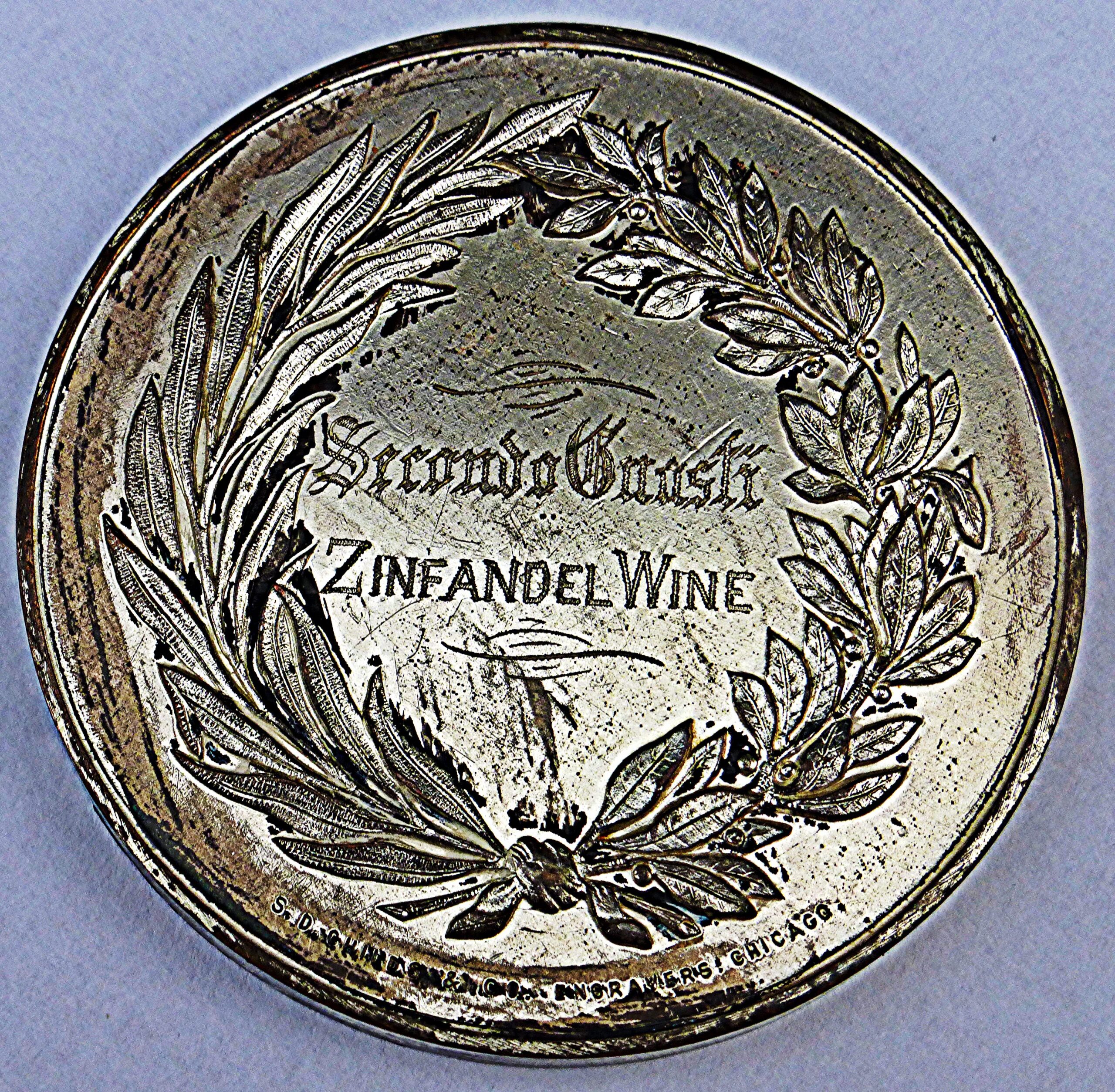
Silver Award Medal 1898
The reverse side of the medal displays a wreath of laurel leaves, a classical symbol of victory and honor, which suggests that this side of the medal was dedicated to the recognition of achievement. Within the laurel wreath, the inscription “Secondo Guasti Zinfandel Wine” indicates that the award was given for a Zinfandel wine, presumably produced by Secondo Guasti, who may have been an exhibitor at the exposition.
The presence of the wine category on the medal signifies the diversity of the exposition’s award classifications, which included agricultural and food products. The meticulous detail of the leaves and the clarity of the inscription are indicative of the care taken in minting the medal. The mention of Zinfandel wine also highlights the exposition’s role in promoting industries and products from across the United States and beyond, with a particular nod to the burgeoning California wine industry, which Secondo Guasti was a significant part of.
The bottom of the medal features the name of the maker or issuer, which is partially visible and appears to read “S.D. Childs & Co. Chicago,” denoting the company responsible for manufacturing the medal. The text and imagery combined present a record of recognition for excellence in viticulture and winemaking, celebrated at this significant historical event.
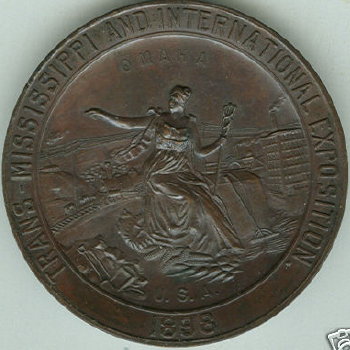
Bronze Award Medal
On the obverse, a classical allegorical female figure is prominently featured, representing the spirit of the exposition. She is poised with an arm raised, holding an electrical light, symbolizing enlightenment and progress, which were central themes of the event. In the background, agricultural and industrial scenes unfold, including a steamboat on the river and a building reminiscent of the exposition’s grand architecture, suggesting the fusion of traditional industry with modern technology.
The surrounding text, “TRANS-MISSISSIPPI AND INTERNATIONAL EXPOSITION OMAHA,” frames the central imagery, with the year “1898” inscribed below.
The medal depicted is a Bronze Award Medal. The medal was crafted by S.D. Childs & Co. Engravers of Chicago, known for their fine workmanship in the late 19th and early 20th centuries. The medal, measuring 2.5 inches in diameter, has a rich chocolate patina that enhances its detailed relief.
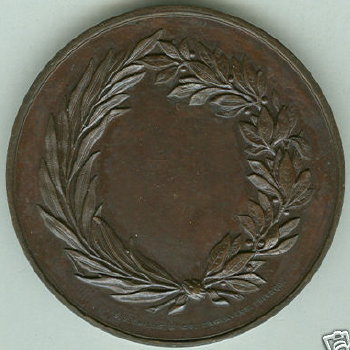
Bronze Award Medal
The image shows a bronze medal with an unadorned central field, which is typical for award medals awaiting customization. The perimeter of the medal is adorned with a laurel wreath, symbolizing honor and victory. Medals like this were produced for the 1898 Trans-Mississippi & International Exposition in Omaha and were intended to be awarded to exhibitors for achievements in various categories.
Unawarded medals exist for several reasons:
Overproduction: Organizers might have overestimated the number of medals needed, leading to a surplus.
No Qualifying Recipient: In some categories, no exhibitor may have met the stringent criteria for awarding, leaving some medals unassigned.
Withdrawn Participants: Exhibitors who were slated to receive an award might have withdrawn from the competition or were unable to attend the exposition.
Record Keeping: After the exposition, poor record-keeping or mishandling could result in awarded medals not being properly engraved or distributed.
An interesting aspect of unawarded medals is that they offer a glimpse into the ‘behind-the-scenes’ of these historic events. They can become collectibles themselves, especially for those interested in the history of the exposition. They serve as blank canvases that carry the potential stories of winners, and their pristine condition often preserves the artistic details intended by the medal’s designer.
About The Trans Mississippi International Exposition of 1898
The Trans Mississippi International Exposition of 1898 and the concurrent Indian Congress were held in Omaha, Nebraska from June 1, 1898 through November 1, 1898. The Exposition showcased the developed West from the Mississippi River to the Pacific Coast. Business and community leaders from the 24 states and territories lying west of the Mississippi River envisioned the Trans Mississippi Exposition as a way to revitalize the regional economy and to show that the West had recovered from the financial panic of 1893.
During the four months of the Exposition, over 2,600,000 people came to view it’s 4,062 exhibits. The exhibits feature social achievements, economic productivity, and community growth of the western region. The Exposition stretched from 24th Street east to Sherman Avenue and from Pinkney Street north to Ames Avenue. Overall, it covered about 108 city blocks. The grand buildings of the Exposition no longer exist because of the poor quality of the construction materials. Most of the structures were built using green wood and plaster in order to keep the cost of these immense buildings down. omahapubliclibrary.org
What was showcased at the The Trans Mississippi International Exposition of 1898?
The Trans-Mississippi International Exposition of 1898, held in Omaha, Nebraska, was a showcase of the technological and agricultural progress of the western United States, particularly the states west of the Mississippi River. It celebrated the culture, resources, and potential of this expansive region. Here’s what was showcased, including new products and attractions:
Agricultural Exhibits: As the fair celebrated the rich agricultural heritage of the Midwest, there were extensive displays of the latest farming techniques, machinery, and products.
Manufacturing and Technological Innovations: The latest industrial machines and technological inventions were on display, reflecting the rapid industrial growth of the region.
Electric Illumination: Similar to the World’s Columbian Exposition in Chicago, the Trans-Mississippi Exposition featured stunning electrical illumination, a relatively new technology at the time.
Grand Court: This was the centerpiece of the exposition, featuring a lagoon surrounded by grand buildings with electric lighting, showcasing the potential for electric power in urban design.
Cultural Attractions: The exposition included exhibits from various ethnic groups and cultures that contributed to the development of the American West.
New Products: Novel consumer goods, likely including foods, household items, and health products, were introduced to the public.
The Indian Congress: One of the largest gatherings of Native American tribes, this congress aimed to preserve and showcase the culture and traditions of Native American people.
Fine Arts: There was a significant emphasis on the arts with exhibits of paintings, sculptures, and other works from artists of the region.
The “Krug Park” Amusement Area: This was an early example of an amusement park, offering rides and attractions to entertain visitors.
Military Parade: The exposition featured a grand military parade that showcased the might of the U.S. military, which had recently been involved in the Spanish-American War.
The Trans-Mississippi International Exposition served not just as a cultural and commercial event but also as a symbol of American progress and optimism at the turn of the century. It provided a platform for states west of the Mississippi to demonstrate their advancements and to envision a future of growth and prosperity.
What famous or notable people attended the The Trans Mississippi International Exposition of 1898?
The Trans-Mississippi International Exposition of 1898 was attended by several notable figures from various sectors, including politics, industry, and entertainment. While comprehensive lists of all attendees might not be readily available, some of the famous individuals known to have visited the exposition include:
President William McKinley: He was the sitting president at the time and attended the exposition. His presence underscored the event’s national significance.
William Jennings Bryan: A prominent political figure and three-time presidential candidate, Bryan was a Nebraska native and spoke at the exposition.
Buffalo Bill Cody: William F. Cody, better known as Buffalo Bill, had his Wild West show perform in Omaha during the exposition, although not officially part of the event, it attracted many visitors.
Scott Joplin: The famous African American composer and pianist, known as the “King of Ragtime,” performed at the exposition.
Susan La Flesche Picotte: The first Native American woman to become a physician in the United States, she was an advocate for public health and the well-being of the Omaha tribe and was known to be active in the region during this period.
Grover Cleveland: The former president was invited to the exposition; however, it’s not clear if he attended.
The exposition was also a destination for various dignitaries, industrialists, inventors, and cultural leaders of the day. It was a place for the exchange of ideas and the celebration of the American West’s cultural and economic achievements.
